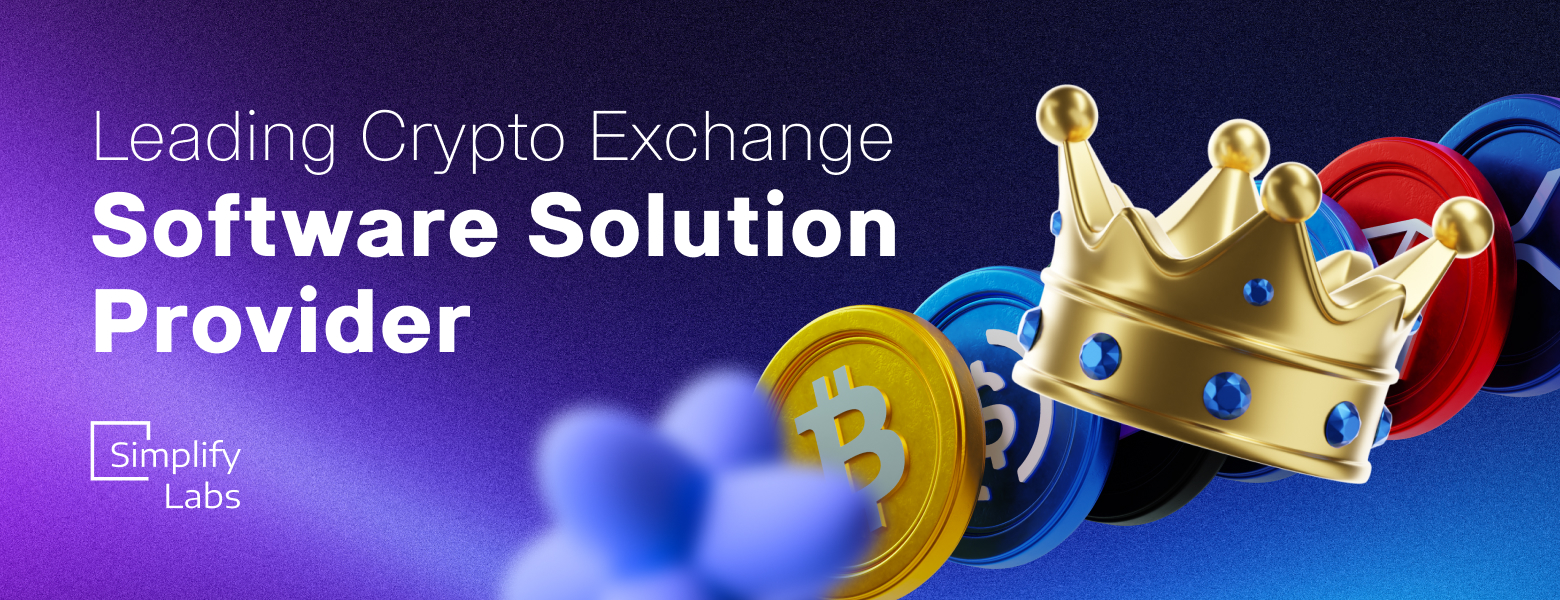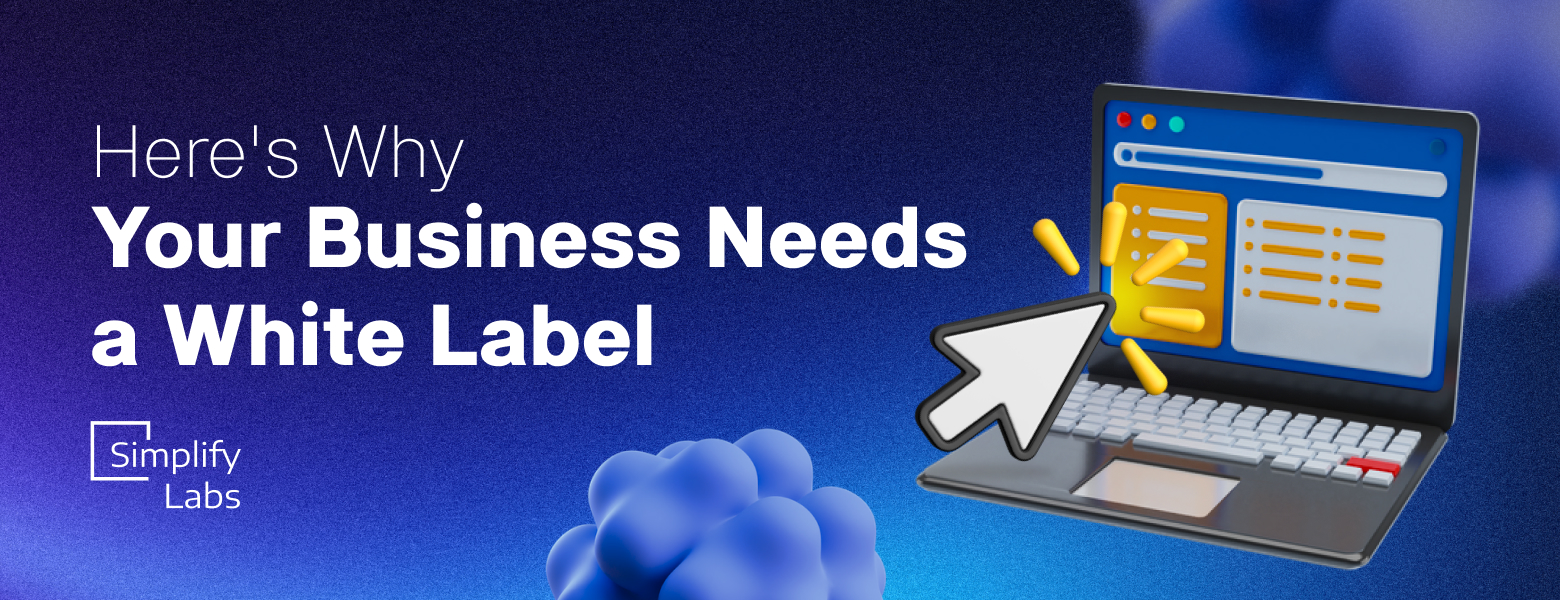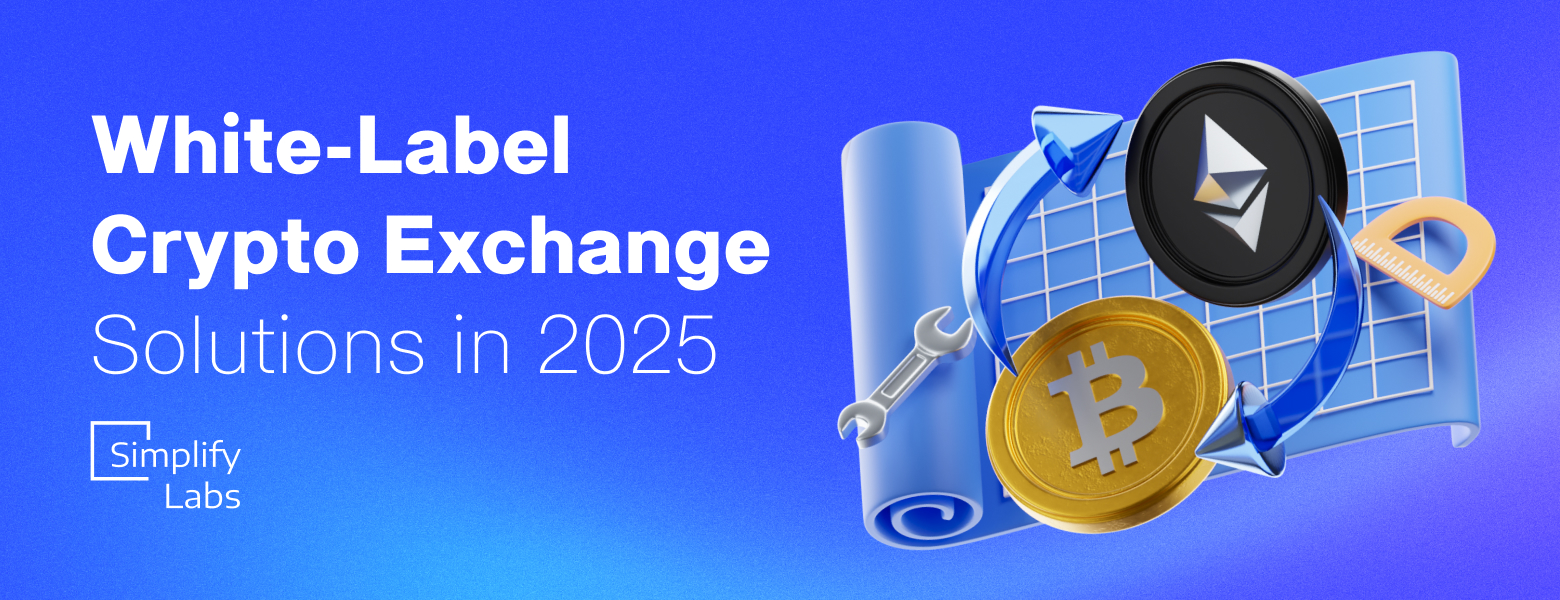The rapid evolution of the global financial landscape has brought cryptocurrency exchanges to the forefront of digital finance. Behind every successful exchange lies a robust technological foundation — and that foundation is built by a cryptocurrency exchange software solution provider. These companies design, develop, and maintain the complex systems that allow users to buy, sell, and manage digital assets securely and efficiently.
In 2025, the crypto market continues to expand beyond individual investors. Banks, fintech startups, and even traditional brokerages are adopting cryptocurrency exchange software to offer trading and custody solutions under their own brands. This shift has increased demand for end-to-end cryptocurrency exchange development services, combining regulatory expertise, liquidity integrations, and user experience design into a single ecosystem.
Whether through white label cryptocurrency exchange platforms or fully custom builds, businesses are no longer simply looking for code — they need scalable infrastructures that support thousands of transactions per second, comply with international regulations, and evolve with new market standards. Choosing the right cryptocurrency exchange development company has become a strategic investment rather than a technical decision.
The Growing Demand for Crypto Exchange Software Development
The crypto industry has matured far beyond the speculative stage. By 2024, global crypto exchange trading volume surpassed $18 trillion, with digital asset ownership exceeding 580 million users worldwide. This scale has driven institutional players and startups alike to develop their own crypto exchange platforms, seeking to capture market share and offer localized solutions.
A modern cryptocurrency exchange development company provides much more than engineering. Its expertise spans compliance with regional laws, liquidity provider integration, fiat on/off-ramps, and modular system design for smooth exchange software development. For emerging fintechs and payment processors, building a proprietary or branded crypto exchange allows them to:
- Diversify revenue streams through trading fees and listing services.
- Retain control over user data and security infrastructure.
- Expand into the fast-growing digital asset segment without relying on third-party exchanges.
- Build cross-chain trading platforms that serve both retail and institutional users.
Because the competitive crypto market evolves rapidly, speed matters. This is why many projects choose white label cryptocurrency exchange models that can be deployed in weeks instead of months. These pre-built frameworks minimize crypto exchange development cost, ensuring faster launch and compliance readiness from day one.
Shifts in Exchange Business Models
The demand for cryptocurrency exchange software is also reshaping business models. While centralized exchanges still dominate in terms of liquidity, decentralized and hybrid structures are gaining traction among users who value transparency and control.
New crypto exchange development services are emerging to bridge this gap — offering hybrid frameworks where users can maintain custody of their assets while benefiting from centralized liquidity and order matching. As regulatory clarity improves, these hybrid models will define the next era of cryptocurrency exchange development, combining security, speed, and global accessibility.
Core Components of Cryptocurrency Exchange Software
Below are the essential building blocks that define a successful cryptocurrency exchange development project.
Architecture and Infrastructure
The core of any exchange software lies in its architecture — the engine that powers all transactions. A professional cryptocurrency exchange development company focuses on building an architecture that is both scalable and fault-tolerant, capable of handling thousands of orders per second with minimal latency.
The architecture typically includes:
- Matching Engine: Executes buy and sell orders with precision and speed.
- Order Management System (OMS): Keeps track of all open, filled, and canceled orders.
- Liquidity Integration: Connects the platform to external liquidity providers, ensuring continuous order flow and tighter spreads.
- Database and Microservices: Manage user data, balances, and trade history securely and independently.
Modern exchange software development often uses cloud-native stacks, container orchestration, and load balancing to maintain uptime and resilience. This allows crypto businesses to scale their crypto exchange operations globally while maintaining compliance and data protection standards.
User Experience and Trading Platform
While back-end systems guarantee performance, the trading platform defines the user’s perception of quality. A well-designed crypto exchange interface should make navigation intuitive, with real-time charts, market depth visualization, and easy access to multiple trading pairs.
Professional crypto exchange software development integrates customizable dashboards, watchlists, and one-click order execution to serve both beginners and professional traders. Wallet integration enables smooth deposits and withdrawals, while real-time notifications help users manage risk effectively.
The front end is not just about visuals — it directly impacts retention and trading volume. That’s why every cryptocurrency exchange software project prioritizes UX/UI design, responsive performance, and seamless API integration for web and mobile platforms.
Security and Regulatory Compliance
Security and regulatory compliance form the backbone of any cryptocurrency exchange development effort. Without them, even the most advanced exchange software becomes vulnerable to reputational and financial risks.
Top-tier cryptocurrency exchange development services include:
- KYC/AML Modules: For identity verification and fraud prevention.
- Cold and Hot Wallet Management: Ensures optimal fund distribution and safety of users’ digital assets.
- Two-Factor Authentication (2FA): Strengthens account-level protection.
- Data Encryption & DDoS Protection: Guards against cyberattacks.
- Audit and Compliance Layers: Align the system with jurisdictional requirements in Europe, Asia, or the U.S.
Partnering with an experienced cryptocurrency exchange development company helps businesses navigate different regulatory environments — from EU’s MiCA framework to Asian and offshore regimes. This ensures that the crypto exchange platform development not only runs smoothly but also meets global operational standards.
Scalability and Performance Optimization
As the crypto exchange grows, so does its user base and transaction load. This requires continuous optimization of exchange software to handle spikes in trading activity, listing of new tokens, and integration of additional services such as staking or margin trading.
Modern exchange software development adopts a modular approach, allowing for seamless upgrades and minimal downtime. APIs are designed to connect external partners, data providers, and custodians efficiently — ensuring the platform remains adaptable as new trends emerge in cryptocurrency exchange development.
White Label Cryptocurrency Exchange vs. Custom Development
When planning to enter the crypto market, businesses face a crucial choice: whether to build a crypto exchange from scratch or to adopt a white label cryptocurrency exchange solution. Both paths can lead to a successful product, but they differ in cost, timeline, flexibility, and long-term scalability.
Advantages of White Label Exchange Solutions
A white label cryptocurrency exchange is a pre-built framework that includes all the essential features — a trading engine, admin panel, wallet integration, and regulatory compliance tools. It allows businesses to launch their trading platform in a matter of weeks rather than months, making it the preferred choice for startups and payment companies aiming to enter the digital asset market quickly.
Partnering with an experienced cryptocurrency exchange development company offering such solutions significantly reduces technical complexity. The provider manages most of the exchange software development process — from back-end architecture to liquidity provider connections and user-side customization. Businesses can focus on branding, marketing, and regional licensing instead of engineering and infrastructure.
Other benefits include:
- Lower crypto exchange development cost, as most components are already tested and deployed.
- Faster compliance and audit readiness due to pre-integrated KYC/AML modules.
- Simplified upgrades and maintenance handled by the vendor.
In a fast-moving competitive crypto market, this approach offers agility — the ability to capture early traction and adapt to market changes without long development cycles.
When Custom Development Makes Sense
While white label solutions deliver speed and reliability, custom cryptocurrency exchange development remains essential for projects that aim to innovate or operate on a large institutional scale. Building from the ground up enables companies to design a crypto exchange platform with proprietary features, unique matching algorithms, or specialized integrations with third-party services.
Custom exchange software development provides full control over infrastructure, allowing businesses to scale horizontally, manage internal liquidity, and integrate bespoke tools for asset management or risk control. However, this approach requires a higher initial investment, a longer build cycle, and a dedicated technical team to develop crypto exchange software from scratch.
Still, for enterprises and regulated financial institutions, the flexibility gained through custom design often outweighs the crypto exchange development cost. It ensures ownership of the technology, unlimited customization, and full autonomy in managing crypto exchange operations — a critical factor for long-term sustainability in cryptocurrency exchange development.
Choosing the Right Path
The decision between white label and custom cryptocurrency exchange software depends on business goals, regulatory requirements, and available resources. For early-stage projects, white label models deliver the fastest route to market and minimal risk. For established companies or those targeting institutional clients, custom crypto exchange software development offers differentiation, performance, and long-term strategic advantage.
Whichever path is chosen, collaboration with a reliable cryptocurrency exchange development company ensures that every component — from architecture and liquidity providers to regulatory compliance — meets the standards of global financial infrastructure.
Stages of Cryptocurrency Exchange Development
Building a secure and efficient crypto exchange is not just about writing code — it’s a structured process that demands precision, compliance, and scalability. A professional cryptocurrency exchange development company follows a clear roadmap that transforms a concept into a functioning trading platform capable of handling high-frequency transactions, managing risk, and supporting diverse digital assets.
Below are the essential stages of cryptocurrency exchange development, from planning to post-launch optimization.
1. Discovery and Business Analysis
Every successful project starts with understanding its purpose. During the discovery phase, consultants and business analysts define the exchange’s goals, target audience, trading pairs, and required level of regulatory compliance.
This stage includes:
- Market and competitor research to identify product-market fit.
- Feature prioritization based on user expectations and business model.
- Selection of architecture type — centralized, decentralized, or hybrid.
- Initial estimation of crypto exchange development cost and resource planning.
By aligning business objectives with technical feasibility, teams can ensure that the crypto exchange development process stays efficient and transparent from the start.
2. System Architecture and Technical Design
Once the concept is validated, engineers design the platform’s architecture. This phase defines how the exchange software will function internally — how orders are processed, how liquidity is managed, and how users’ digital assets are secured.
Key components include:
- Order Matching Engine: Executes trades in milliseconds.
- Liquidity Providers Integration: Ensures tight spreads and deep markets.
- Database & Microservices: Handle large volumes of data with redundancy and fault tolerance.
- Security Frameworks: Encryption, firewalls, and authentication modules for safe transactions.
Scalability and modularity are key priorities at this stage. A flexible design allows the crypto exchange software to evolve with market requirements without full reengineering.
3. Core Exchange Software Development
This is where ideas become reality. The cryptocurrency exchange software development phase covers front-end and back-end creation, wallet integration, and API configuration.
- Backend Development: Engineers write and test the core logic for matching, settlement, and reporting systems.
- Frontend Development: Designers build an intuitive interface for the trading platform, ensuring real-time market data display and responsive performance across devices.
- Wallets and Payment Modules: Enable deposits, withdrawals, and fiat integration.
Professional teams use secure coding practices, multi-layer architecture, and agile methodologies to develop crypto exchange software that’s both stable and easily maintainable. The result is a product ready for stress testing and external review.
4. Testing, Audits, and Regulatory Readiness
Before going live, the exchange software undergoes comprehensive testing. QA teams perform unit, load, and penetration tests to identify performance or security vulnerabilities.
At this stage, compliance audits are equally crucial. The cryptocurrency exchange development services provider ensures that all operational and technical aspects align with AML/KYC rules, licensing frameworks, and international regulatory compliance requirements.
This process not only builds user trust but also ensures the exchange can legally operate in multiple jurisdictions without interruption.
5. Launch and Post-Deployment Maintenance
After successful testing, the platform moves into production. However, crypto exchange development services do not stop at launch — maintenance, monitoring, and feature updates are continuous.
Ongoing support includes:
- Integrating new digital assets and trading pairs.
- Enhancing performance during peak market activity.
- Security patching and wallet updates.
- Scaling server capacity to handle growing user traffic.
The best cryptocurrency exchange development company offers proactive maintenance and crypto exchange consulting, helping clients optimize performance, reduce costs, and implement future upgrades smoothly.
6. Continuous Improvement and Scalability Planning
Post-launch, the focus shifts to user feedback, analytics, and long-term sustainability. Metrics like trading volume, order execution speed, and user retention guide future improvements.
Through regular exchange software development iterations, businesses can expand features — margin trading, staking, token listings — while ensuring the platform remains compliant and high-performing. A strong technical foundation ensures that crypto exchange operations scale globally without sacrificing reliability or security.
Key Features Every Crypto Exchange Must Include
The foundation of a successful crypto exchange lies in its functionality. Each feature plays a crucial role in ensuring performance, liquidity, and user trust. When designing or upgrading a cryptocurrency exchange software, businesses must prioritize not only what users see but also the unseen systems that guarantee stability, compliance, and transparency.
Below are the essential components that every modern trading platform should include to stay competitive in the global digital asset market.
1. High-Performance Matching Engine
At the heart of any exchange software is its matching engine — the system responsible for pairing buy and sell orders in real time.
A high-performance engine ensures low latency and fair trade execution, even during peak market volatility.
Professional exchange software development teams design engines capable of handling thousands of orders per second with millisecond-level precision. Features like order queuing, price-time priority, and real-time risk assessment protect traders and maintain market efficiency.
2. Wallet and Payment Integration
Wallets are the operational core of any crypto exchange. The ability to deposit, withdraw, and store digital assets securely determines user confidence.
A well-built cryptocurrency exchange software integrates multi-currency wallets, hot and cold storage systems, and third-party payment processors for fiat gateways.
Security protocols like multi-signature authorization, encryption, and automatic withdrawal limits prevent unauthorized access and ensure compliance with AML regulations.
3. KYC/AML and Regulatory Compliance Tools
Modern exchanges operate under increasing scrutiny, making regulatory compliance mandatory. Built-in KYC (Know Your Customer) and AML (Anti-Money Laundering) modules automate user verification, document review, and risk scoring.
Top cryptocurrency exchange development services integrate API-based verification systems that comply with local and international rules. This reduces manual effort, speeds up onboarding, and ensures the crypto exchange remains legally compliant across multiple jurisdictions.
4. Liquidity and Market Depth
Without liquidity, even the best crypto exchange platform development effort fails. Deep liquidity ensures tighter spreads and better order execution for traders.
Professional cryptocurrency exchange development companies integrate multiple liquidity providers and internal market-making engines. This guarantees that users can execute large trades without major price slippage and that the exchange remains attractive to institutional participants.
Moreover, smart routing algorithms help aggregate liquidity from various sources, improving order fill rates and market competitiveness.
5. Intuitive Trading Dashboard
User experience defines customer loyalty. A clean, intuitive trading platform with customizable dashboards and analytical tools allows traders to make faster decisions.
Modern crypto exchange software development includes advanced charting libraries, trading history, profit/loss summaries, and quick order buttons.
Visual clarity, light/dark mode, and responsive layouts for web and mobile versions create a frictionless trading environment — a key factor in user retention and daily active volume growth.
6. Reporting and Risk Management Tools
Beyond trading, exchanges must help users monitor performance and manage exposure. Built-in risk controls — margin alerts, stop-loss settings, and real-time analytics — enable better decision-making.
From the operator’s side, exchange software development should include admin dashboards for monitoring liquidity, transaction flows, and suspicious activity alerts.
Transparent reporting also supports external audits and regulatory compliance, strengthening the exchange’s reputation among both users and regulators.
7. Scalability and API Connectivity
In an ever-expanding competitive crypto market, integration and growth potential are critical. High-quality cryptocurrency exchange software includes modular APIs for external data providers, wallets, market makers, and institutional clients.
These APIs make it possible to connect new services — such as DeFi integrations, staking modules, or NFT marketplaces — without disrupting operations. Scalable architecture ensures that crypto exchange operations can grow smoothly, supporting higher user loads and new revenue channels.
Why Partner with Simplify Labs
At Simplify Labs, we don’t just develop technology — we engineer infrastructure for the next generation of digital finance.
As an experienced cryptocurrency exchange development company, we specialize in building scalable, compliant, and high-performance ecosystems for trading, payments, and liquidity management.
Our team delivers complete cryptocurrency exchange development services — from concept and architecture to deployment and maintenance.
We work with both startups and enterprises that want to accelerate their entry into the digital asset economy through:
- Custom Exchange Software Development: Tailored systems built from the ground up with advanced trading engines, real-time analytics, and institutional-grade security.
- White Label Cryptocurrency Exchange Solutions: Fast-deployable frameworks with built-in compliance, liquidity aggregation, and admin dashboards.
- Regulatory Consulting and Integration: Guidance on global compliance requirements and partnerships with verified liquidity providers.
We understand that every business is unique. That’s why Simplify Labs applies a modular, data-driven approach to crypto exchange software development, ensuring flexibility for future scaling — whether you plan to expand into new markets, add DeFi features, or integrate fiat payment rails.
With years of expertise in exchange software development and blockchain infrastructure, we help our clients not only launch but sustain their crypto exchange operations — efficiently, securely, and with confidence.






